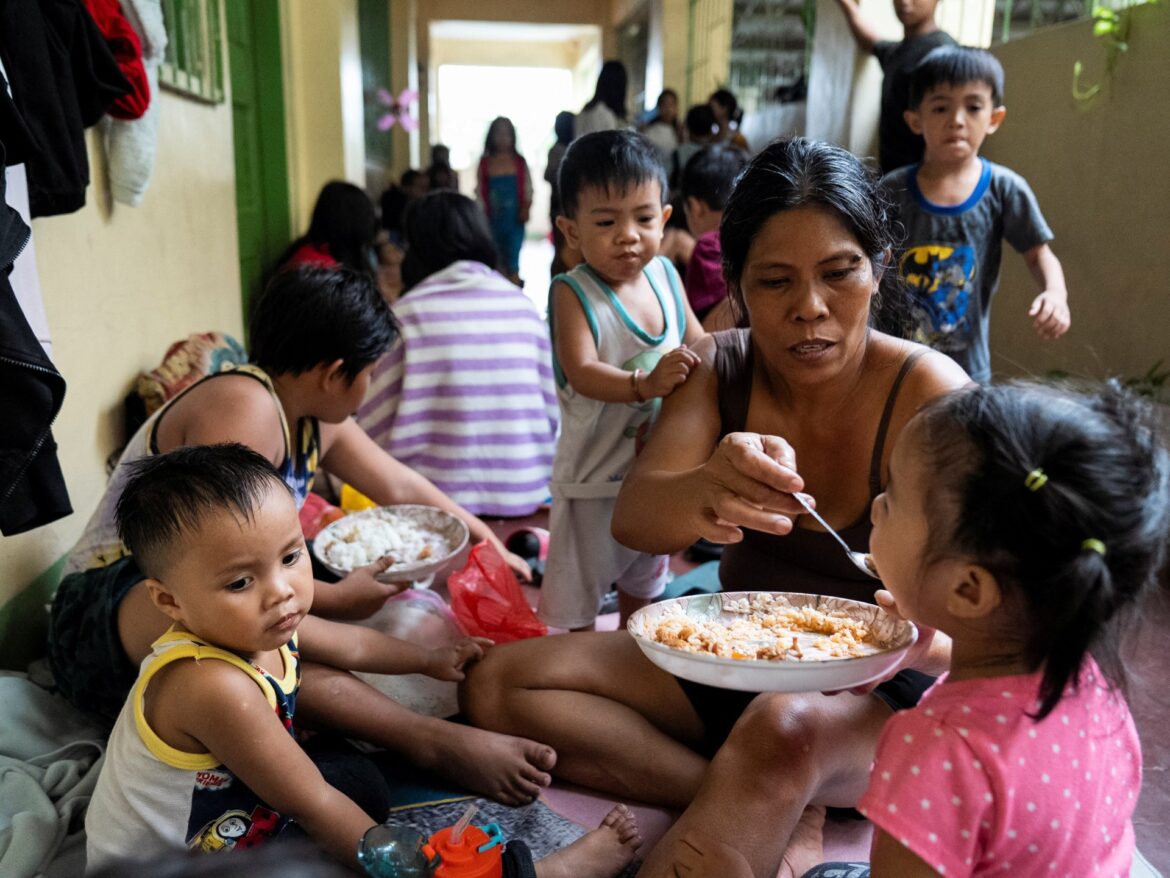Leadership and Resilience in the Face of Crisis: Lessons from Typhoon Fung-wong
On November 9, 2025, the Philippines faces one of its most formidable natural adversaries—Super Typhoon Fung-wong. With wind speeds reaching 185 km/h (115 mph) and gusts escalating to 230 km/h (140 mph), the storm poses an existential threat to the archipelago, forcing nearly a million residents to evacuate while emphasizing the urgent need for effective leadership, societal resilience, and ethical governance.
The capacity of a nation to withstand such formidable challenges lies in the foundation of its leadership and its systems of governance. In times of crisis, it is the leaders who emerge at the forefront; they solicit cooperation from communities and foster an environment wherein collective efforts can thrive. In this case, Defence Secretary Gilberto Teodoro Jr. has underscored the necessity of immediate action, urging residents in high-risk areas to find shelter swiftly. The blend of urgency and clarity in his televised address not only indicates the gravity of the situation but also delineates the role of governance in safeguarding lives.
The Landscape of Vulnerability
The Philippines, located in the Pacific typhoon belt, is no stranger to natural calamities. As the nation grapples with the repercussions of Typhoon Kalmaegi—an earlier storm that claimed at least 224 lives—Fung-wong emerges as a stark reminder of the cyclical nature of environmental disasters. Research suggests that vulnerable regions often bear the brunt of climatic disturbances, highlighting the need for not just immediate response mechanisms but collaborative innovations in disaster risk reduction.
In an era when extreme weather events are intensifying due to climate change, innovative approaches must be adopted. Perhaps the most significant lesson from Typhoon Fung-wong and its predecessors is that vulnerability is not merely a geographic issue but also a societal one. Integration of technological solutions—such as early warning systems, predictive analytics, and robust communication networks—can significantly mitigate the impacts of natural disasters. Investing in sustainable infrastructure and environmental management will serve to protect communities and save lives in the long run.
Societal Response and Community Resilience
What sets communities apart during crises is the strength of their societal networks. As nearly 916,860 individuals leave their homes in the Bicol region and other vulnerable areas, the communal response becomes crucial. In this instance, the evacuation requires not just a logistical approach but an empathetic one, where individuals and families support one another. Local leaders, community organizations, and volunteers often play irreplaceable roles in disaster preparation and recovery.
Such community resilience hinges upon the ethical obligations of leaders and institutions to prioritize the welfare of citizens above all else. It calls for transparency in communication and accessibility of resources, particularly in the face of uncertainties. The response to Fung-wong has included preventive measures such as school and government office closures, indicating that agile governance can adapt to the pressing needs of the populace.
Ethical Imperative in Governance
The ethical dimension of governance in times of disaster is paramount. While the Philippines has yet to request international assistance after Kalmaegi, the preparedness to accept aid, should the need arise, reflects an understanding of interdependence in global society. Acknowledging vulnerability, even as a nation with a proud history of resilience, is a critical step in fostering an authentic dialogue about support and collaboration.
Governments must ensure that information is disseminated equitably, as withholding it can exacerbate crises. In a world interconnected through digital platforms, the ethical distribution of information can either empower communities to mobilize or leave them paralyzed by fear and misinformation.
The Role of Innovation
Innovation in disaster management is not limited to technology; it also encompasses new governance frameworks. The disaster response to Super Typhoon Fung-wong provides an opportunity to rethink the structures and protocols involved in crisis situations. Collaborative partnerships between governments, non-profits, and private sector entities can galvanize resources more effectively, ensuring multidimensional and comprehensive responses.
Moreover, fostering a culture of innovation must be a cornerstone of strategic thinking within governmental and non-governmental organizations. Adaptive governance mechanisms that embrace change, extract lessons from past experiences, and incorporate feedback loops can enhance response strategies and public trust.
Dralys Insight
The unfolding events surrounding Super Typhoon Fung-wong illustrate profound lessons in leadership, societal resilience, ethical governance, and innovation. As leaders stand at the helm of decision-making during crises, they must inspire hope and fortify communities through effective communication and strategic foresight. The societal response to natural disasters relies heavily on the readiness of individuals and organizations to come together in solidarity, showcasing the power of a connected community.
Further, it is imperative that institutions prioritize ethical conduct, transparency, and inclusive dialogue, particularly when it comes to distributing resources and accepting assistance. The opportunity for innovation—be it in disaster preparedness, recovery protocols, or governance itself—should be seized as a pathway to more robust systems. As we navigate the complexities of climate change and its fallout, we must take heed of these insights to cultivate a society that is prepared, resilient, and adaptable. The continued collaboration and innovation can not only shield us from the storms of today but pave the way for a sustainable future built on the foundations of leadership and community.
Adapted for Dralys Insight from global reports and public sources.

